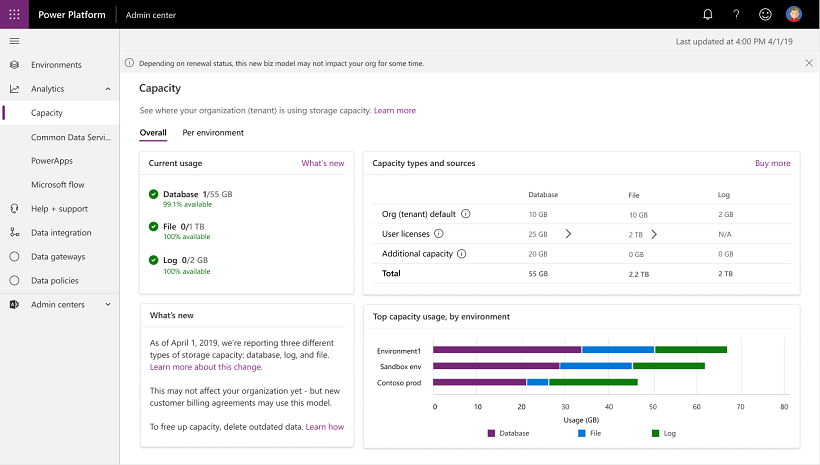Microsoft have recently changed the model for Dynamics 365 storage and environments, which any Dynamics 365 customer or potential customer should be aware of as it will impact your costs, storage space and environments.
Insights
New Dynamics 365 storage and sandbox changes: FAQs
The old model
Previously, Dynamics 365 customers would receive a set amount of ‘free’ storage that was included with Dynamics 365, which was based on a base level and accrued storage based on the number of system users. Additional storage could be purchased if required. Each Dynamics 365 instance would also come with one free non-production environment (or ‘sandbox’). These are used for development in order to ensure any work carried out does not impact your live production system. For development best practices, you should have four environments: Development, Test, UAT and Live – which would mean paying for an additional two sandboxes each month.
The new model
Now, organisations no longer need to pay for non-production environments and instead you pay for storage used – however, rather than being one ‘storage’ cost this is broken down into three areas.
- Database Storage – entity data and definitions
- File Storage – attachments, files, photos and videos
- Log Storage – data changes over time
As before, every Dynamics 365 environment comes with a default amount of storage that is included with the licencing and additional storage is accrued based on the number of full users licensed for the system. (This does not include Team members)
What is the default storage amount?
[TABLE]
What about non-production instances?
Non-production instances are no longer priced per instance, instead are priced based on storage used. Creating a new environment requires 1GB database capacity – so long as you have this capacity, you can create as many instances as you wish.
How do I manage storage now?
The new Power Platform admin centre provides insights into storage usage and capacity so that administrators can keep track of storage being consumed. When approaching or exceeding your limits you will see notification banners too.

Impact on New vs Existing Customers
Existing Dynamics 365 customers
Existing Dynamics 365 customers that are currently using this ‘older’ model can continue like this for their current agreements. If renewing between 1st April 2019 – 31st Dec 2019 you can choose to stay on this model or switch to the new model.
New customers
Since 1st April 2019, new customers will adopt the new storage approach.
What are your next steps?
It is worth considering how your storage and instance costs will change on the new model – while you can still renew against the former model, you will likely need to change to this model upon next renewal. We recommend calculating your potential costs and establishing the amount of storage you would be entitled to based on your current setup. It is also worth reviewing methods to reduce storage costs and usage, such as using SharePoint or performing regular, automated clean-ups.
If you need calculating costs or reviewing your storage and licensing options, please contact us.
You might also be interested in our other articles on recent Dynamics 365 announcements:
- What’s coming to Dynamics 365 Customer Engagement in October 2019?
- Dynamics 365: An overview of the new Unified Interface
- Best practices for the new Dynamics 365 upgrade approach
- What is the Power Platform?